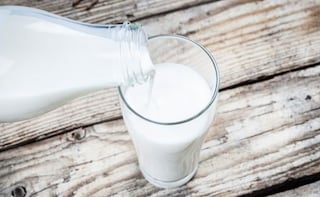Every mammal starts it’s life with milk as the only source of food that contains all the essential nutrients required for growth and development. Mother’s milk is also the easiest to digest for a new born, a few drops immediately after birth can protect the child in more ways than one. In fact, a glass of milk isn’t just beneficial for children, adults too can benefit from this healthy drink. It contains 5% lactose, 3.7% fat and 3.5% protein casein and calcium complexes which contribute to our good health and ability to cope with diseases. According to research led by professor Peter Elwood of Cardiff University, drinking milk can lessen the chances of dying from illnesses such as coronary heart disease and stroke by up to 15 to 20 percent.
For the latest food news, health tips and recipes, like us on Facebook or follow us on Twitter and YouTube.
Advertisement
